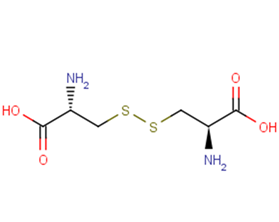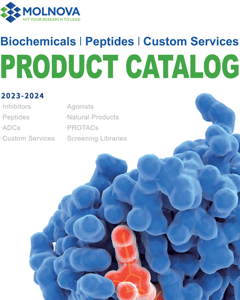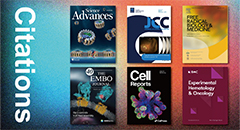
cystine
CAS No. 56-89-3
cystine( Cystine | NSC 13203 | NSC-13203 )
Catalog No. M18828 CAS No. 56-89-3
Not considered one of the 20 amino acids, Cystine is a sulfur-containing derivative obtained from oxidation of cysteine amino acid thiol side chains.
Purity : >98% (HPLC)
 COA
COA
 Datasheet
Datasheet
 HNMR
HNMR
 HPLC
HPLC
 MSDS
MSDS
 Handing Instructions
Handing Instructions
| Size | Price / USD | Stock | Quantity |
| 500MG | 37 | In Stock |


|
| 1G | 43 | In Stock |


|
Biological Information
-
Product Namecystine
-
NoteResearch use only, not for human use.
-
Brief DescriptionNot considered one of the 20 amino acids, Cystine is a sulfur-containing derivative obtained from oxidation of cysteine amino acid thiol side chains.
-
DescriptionNot considered one of the 20 amino acids, Cystine is a sulfur-containing derivative obtained from oxidation of cysteine amino acid thiol side chains. It functions as an antioxidant and protects tissues against radiation and pollution, slowing the aging process. It also aids protein synthesis. Cystine is abundant in many proteins of skeletal tissues and skin, and found in insulin and digestive enzymes chromotrypsinogen A, papain, and trypsinogen.
-
In Vitro——
-
In Vivo——
-
SynonymsCystine | NSC 13203 | NSC-13203
-
PathwayOthers
-
TargetOther Targets
-
RecptorAntioxidant
-
Research Area——
-
Indication——
Chemical Information
-
CAS Number56-89-3
-
Formula Weight240.29
-
Molecular FormulaC6H12N2O4S2
-
Purity>98% (HPLC)
-
SolubilityIn Vitro:?0.1 M NaOH : 3.33 mg/mL (13.8)
-
SMILESC(C(C(=O)O)N)SSCC(C(=O)O)N
-
Chemical NameCystine
Shipping & Storage Information
-
Storage(-20℃)
-
ShippingWith Ice Pack
-
Stability≥ 2 years
Reference
1.Ohtsu I, et al. PLoS One. 2015 Apr 2;10(3):e0120619.
molnova catalog



related products
-
Leonloside D
Leonloside D is a natural product.
-
Graniline
Graniline is a natural product.
-
Alexamorelin Met 1
Alexamorelin Met 1 is one of the metabolites of alexamorelin. The heptapeptide Ala-His-D-2-methyl-Trp-Ala-Trp-D-Phe-Lys-NH2 (Alexamorelin) is a synthetic molecule which inhibits growth hormone secretagogue binding in vitro.



 Cart
Cart
 sales@molnova.com
sales@molnova.com


